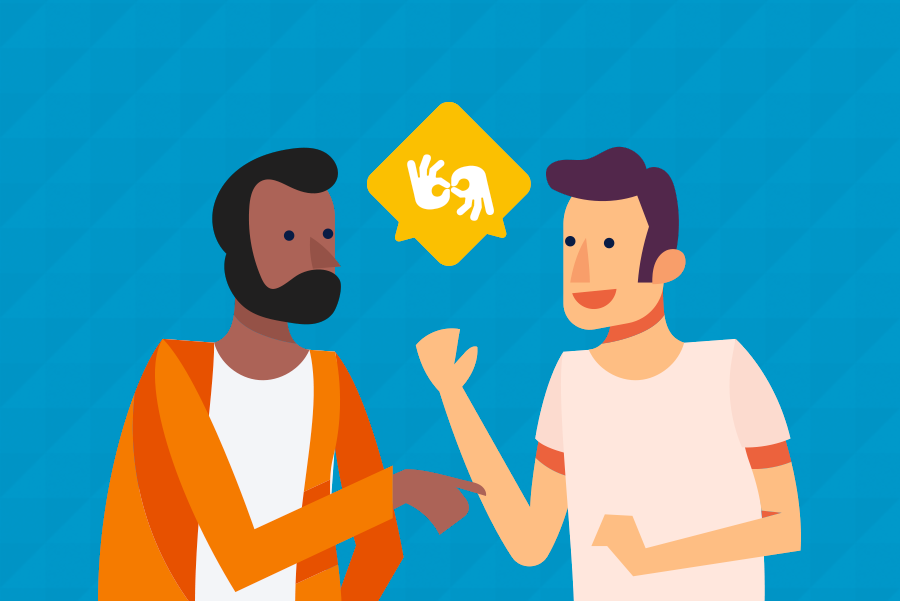
Question — What is the difference between a person who is “deaf,” “Deaf,” or “hard of hearing”?
The deaf and hard of hearing community is diverse. There are variations in how a person becomes deaf or hard of hearing, level of hearing, age of onset, educational background, communication methods, and cultural identity. How people “label” or identify themselves is personal and may reflect identification with the deaf and hard of hearing community, the degree to which they can hear, or the relative age of onset. For example, some people identify themselves as “late-deafened,” indicating that they became deaf later in life. Other people identify themselves as “deaf-blind,” which usually indicates that they are deaf or hard of hearing and also have some degree of vision loss. Some people believe that the term “people with hearing loss” is inclusive and efficient. However, some people who were born deaf or hard of hearing do not think of themselves as having lost their hearing. Over the years, the most commonly accepted terms have come to be “deaf,” “Deaf,” and “hard of hearing.”

"Many people in the United States still believe that ASL is universal. That is probably because they don’t know that it actually stands for American Sign Language. In other words, it is the language that many deaf people in our country communicate in."

"First things first: there is a big difference between the medical and cultural definition of deafness. From the medical point of view, it is a disability caused by hearing loss, which can happen at any moment in life. Now, from the cultural perspective, it is a different way to experience life not based on sounds. Usually, these two concepts are differentiated between people who are deaf (medically) and Deaf (culturally).
Today, 13% of the United States’ population are deaf or hearing impaired. However, not all of them identify with the deaf culture. Do you want to know why? Then follow along this article!"
:max_bytes(150000):strip_icc():format(webp)/GettyImages-105783674-56af30663df78cf772c15eb8.jpg)
Tetra Images / Getty Images
 "Sign languages are the fundamental means of communication for those with hearing or speech impairments. Apart from that, they are also the primary carriers of Deaf culture, with different beliefs, behaviors, literary traditions, history, and values."
"Sign languages are the fundamental means of communication for those with hearing or speech impairments. Apart from that, they are also the primary carriers of Deaf culture, with different beliefs, behaviors, literary traditions, history, and values."
"Communication is the very foundation of our ability to thrive in life. But what happens when our disability hinders our ability to communicate? Millions of deaf children around the world lack proper education, which affects the quality of life as adults. Growing up deaf, Nyle now shares his vision of improving the lives of deaf children around the world. He manages to get his message across loud and clear - communication is always possible. Nyle DiMarco is a model, an actor and also an activist. In 2014 he became the second male winner and the first deaf contestant to win AMERICA’S NEXT TOP MODEL. Only two years later he added the Mirror Ball Trophy to his collection after winning DANCING WITH THE STARS. As a model, he has walked the runway for Giorgio Armani at Milan Fashion Week. Yet, his greatest acchievement was to become the face of the deaf community and disabled people worldwide. This talk was given at a TEDx event using the TED conference format but independently organized by a local community."